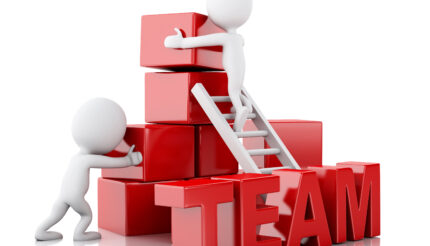Most of us cringe when we hear there is an upcoming teambuilding, morale improvement, employee engagement, and team productivity workshop that we are expected to attend. Why are we so turned off? What is it about team dynamics that challenge many of us? Why does the idea of working on teambuilding conjure such negativity?
Many believe that working on team building is waste of time and money. They don’t see a tangible return on investment on activities that force teamwork and team building. But it is critical that employees work in unison to reach organisational objectives. How do you do that without forcing them to work together?
Often, team building fails because the basics aren’t addressed. Organisations rarely focus on individual motivating factors, personality styles and don’t have standard operating procedures to help feed organic team dynamics. Without understanding where each employee is and how they contribute to the organisation, you leave huge gaps in the team building framework.
“Teamwork is a much deeper concept than simply group work” (Salyers, 2018)
At ActionCOACH, we focus on six keys to building a winning team and the foundation of the process focuses on individual contributors and how they are fundamental to team productivity. The six keys to building a winning team includes;
-
Strong Leadership
-
Common Goals
-
Rules of the Game
-
Action Plans
-
Support Risk Taking
-
100% Involvement and Inclusion
Strong leadership requires leadership that is transparent and demonstrates high integrity. Strong leaders model behaviour and are clear with their direction. Strong leaders understand that lifting their team members up makes them even stronger.
Common Goals allow team members to identify what is important and how they fit into organisational framework. Core values, culture points, and a clear vision and mission all serve to crystallise goals.
Rules of the Game are simple standard operating procedures that give clear direction on how things are done. These agreed rules provide clear parameters of behaviours and actions expected from the team. Detailed outlined rules leave little room for interpretation because these rules relate to the desired outcomes that the company expects.
Action Plans developed to achieve results includes team members and are a clear road map. These plans give team members clear direction and expectations.
Support Risk Taking within the organisation can ignite innovation and motivate team members to contribute in new ways. Learning from failure is critical to help teams be successful. Build a culture that doesn’t punish team members for mistakes but creates a learning opportunity to continue to improve.
100% inclusion and involvement are critical to set up an environment that demands participation. Contributions from everyone in the organisation need a voice and an outlet to ensure team members work as a collective to reach organisational objectives.
“True teamwork requires more to achieve the “whole is greater than the sum of the parts” payoff” (Salyers, 2018)
Open communication, clear roles and responsibility, timely feedback and transparency all work to build team’s dynamics. A motivated team member that understands their place and contribution to the whole, will likely function and behave in way to achieve the results because it benefits their personal goals.





